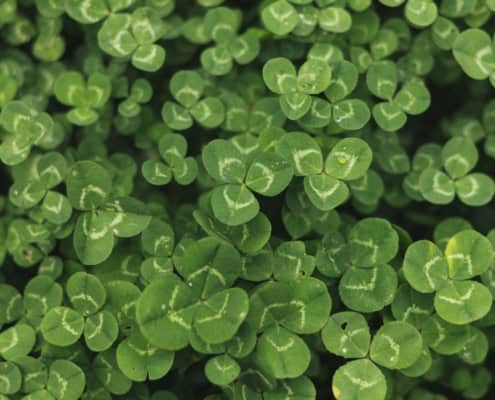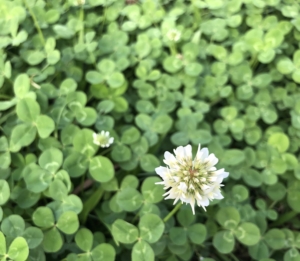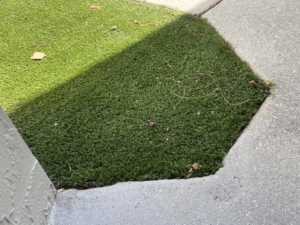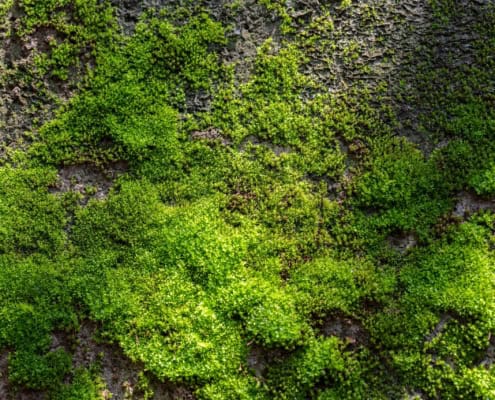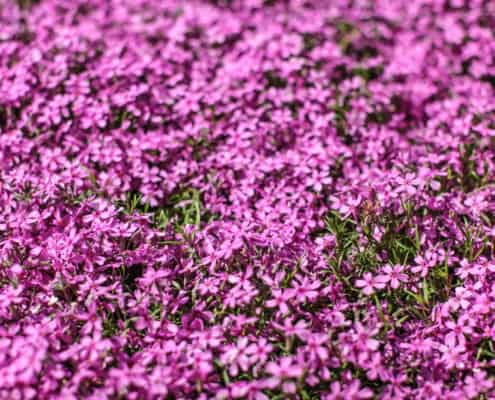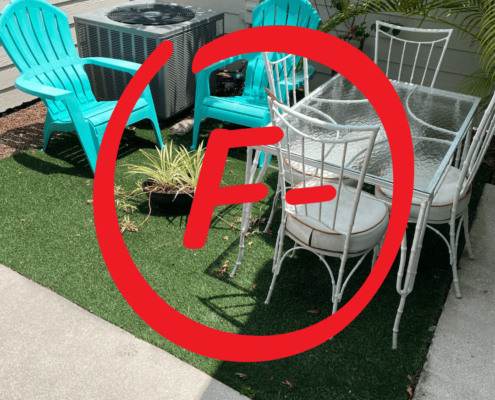6 Sustainable Grass Alternatives That Look Fantastic
In this age of environmental consciousness, where sustainability and conservation are of greatest importance, we believe that as homeowners, we should look into alternatives to the traditional grass lawns that require considerable amounts of water, fertilizers, and ongoing maintenance.
As an online seed store serving customers nationwide, we recognize the shared objective of designing a visually appealing landscape that boosts curb appeal. However, it is important to find a balance between aesthetics and sustainability.
Fortunately, achieving this balance is easier than you might think. In the following list, we will explore various lawn alternatives that can help you achieve a visually appealing landscape without sacrificing sustainability.
Additionally, we will explore the positive environmental benefits that these alternatives have for bugs, pollinators, animals, and even humans, in contrast to artificial grass solutions. Furthermore, we will provide useful tips on maintaining these alternatives without the need for harmful pesticides.
6 Eco-Friendly Grass Alternatives
1. Micro Clover
Benefits of Micro Clover as a Grass Alternative
Micro Clover lawns bring many benefits, such as being affordable and naturally fertilizing the soil.
Clover acts as a soil conditioner and provides a continuous source of nitrogen to nearby grass, making the entire lawn healthier and greener.
Micro-clover is perfect for yards with poor soil quality and can be overseeded with low-maintenance turf grasses for a resilient and lush lawn.
Common Applications
- Residential Lawns: Micro Clover can be a great alternative to traditional grass in residential lawns, providing a low-maintenance and eco-friendly option.
- Parks and Public Spaces: Its ability to tolerate drought and suppress weeds makes micro-clover suitable for parks and other public spaces.
- Erosion Control: Micro Clover can help control erosion on slopes or areas prone to soil erosion.
- Pollinator Gardens: The flowers of micro-clover attract bees and other pollinators, making it a beneficial choice for pollinator gardens.
- Green Roofs: Micro Clover is a suitable grass alternative for green roofs, providing a low-maintenance and sustainable option.
Pros and Cons of Micro Clover
- Pros
- Low maintenance
- Drought tolerant
- Nitrogen fixing
- Weed suppressant
- Eco-friendly
- Cons
- Can be invasive in some areas
- May not provide a uniform lawn
- Some people find it unattractive compared to traditional grass
- Needs well-drained soil for optimal growth
- Not as resilient to heavy foot traffic as traditional grass
2. White Dutch Clover
Benefits of White Dutch Clover as a Grass Alternative
If you’ve ever seen clusters of white Dutch Clover while driving in urban or rural areas, you’re likely already familiar with its beauty.
This beautiful clover variety not only adds a touch of charm to meadows and fields, but it also requires minimal upkeep and attracts pollinators, making it a great choice for sustainable landscaping.
But did you know that White Dutch Clover can actually be used as a fantastic alternative to traditional lawns?
It is thick and comfortable, highly resistant to drought, and incredibly durable. This makes it perfect for areas of your lawn that receive heavy foot traffic. So, if you’re looking for a low-maintenance and eco-friendly solution for your lawn, Dutch Clover might be the perfect choice for you!
Common Applications
- Ground Cover: White Dutch Clover is often used as a ground cover to fill in bare areas of lawns or as a companion to other plants, providing weed suppression and erosion control.
- Pollinator Attraction: One of the benefits of White Dutch Clover is its ability to attract pollinators, such as bees and butterflies. The flowers of the clover provide a source of nectar, making it a valuable addition to garden spaces and meadows.
- Soil Improvement: White Dutch Clover is a nitrogen-fixing plant. It has the ability to take nitrogen from the air and convert it into a usable form, which enriches the soil. This can benefit surrounding plants and contribute to overall soil health.
- Erosion Control: Due to its dense growth habit, white Dutch Clover can be used to control soil erosion. Its deep root system helps stabilize the soil, reducing the risk of erosion in areas with slopes or high water flow.
Pros and Cons of White Dutch Clover
- Pros
- Improves soil health through nitrogen fixation
- Provides weed suppression and erosion control
- Low maintenance and drought tolerant
- Attracts pollinators, contributing to biodiversity
- Cons
- May become invasive in some areas
- Can be challenging to establish in existing lawns
- May not tolerate heavy foot traffic
- May not be suitable for all climates
3. Ornamental Grass
Benefits of Ornamental Grass as a Grass Alternative
Many of our clients love using ornamental grasses to change up the look of their yards or fields.
These grasses are known for their beautiful appearance and come in a wide variety of species, sizes, textures, and colors.
They can add drama, texture, and movement to any landscape. Whether you prefer the gentle swaying plumes of fountain grass (Pennisetum) or the tall spikes of switchgrass (Panicum), there is an ornamental grass variety to suit every taste and design preference.
You can use them as a focal point, a backdrop, or as part of a mixed planting scheme, and they will create a visually stunning impact in any garden space.
Common Applications
- Border plantings: Ornamental grasses make excellent border plants, adding height and structure to flower beds.
- Privacy screens: Tall and dense grasses can be used to create natural screens, providing privacy in your outdoor space.
- Erosion control: Their deep root systems help stabilize soil, making them effective in preventing erosion on slopes.
- Containers: Smaller varieties of ornamental grasses work well in containers, adding a touch of elegance to patios and balconies.
- Water features: The graceful sway of ornamental grasses near water features like ponds and fountains creates a soothing and aesthetic ambiance.
Pros and Cons of Ornamental Grass
- Pros
- Low maintenance
- Drought tolerant
- Adds visual interest
- Attracts birds and wildlife
- Provides year-round interest
- Cons
- Some varieties can be invasive
- May require cutting back or dividing to prevent overcrowding
- May not be suitable for small gardens
- May require specific soil conditions for optimal growth
- Can be damaged by strong winds or heavy snowfall
Remember, it’s important to choose the right variety of ornamental grass that suits your specific needs and the growing conditions in your area.
4. Moss
Benefits of Moss as a Grass Alternative
Moss, a popular low-maintenance grass alternative, remains green throughout the year and doesn’t need mowing, weeding, watering, or fertilization.
It thrives in shaded and moist landscapes, making it an ideal choice.
We have heard stories from customers that pair this soft cover with gravel or pavers for an attractive visual display, or they leave it as is – also they said that either way, you won’t have to worry about mowing.
Many resilient moss varieties can withstand heavy foot traffic, making it versatile for properties with lots of visitors.
Common Applications
- Moss Lawns: You can create a lush, velvety green lawn alternative with different moss species.
- Moss Gardens: Enhance your garden beds or rockeries with a variety of moss for a natural, serene look.
- Moss as Ground Cover: Ideal for shaded areas under trees or along walkways where grass struggles to grow.
- Moss Terrariums: Build miniature ecosystems in glass containers with moss, rocks, and small plants for indoor decoration.
Pros and Cons of Moss
- Pros
- Low maintenance
- Water conservation
- Improves soil health
- Adds natural beauty
- Cons
- Slow growth rate
- Susceptible to drying out
- Limited foot traffic tolerance
- May require specific growing conditions
5. Sweet Woodruff
Benefits of Sweet Woodruff as a Grass Alternative
When it comes to maintaining our lawns, many of us are looking for alternatives to traditional grass.
Sweet woodruff (Galium odoratum) is a herb with a pleasant fragrance that can serve as an excellent grass substitute. Not only does it add beauty to your outdoor space, but it also comes with a host of benefits. Let’s explore some of the common applications and advantages of using sweet woodruff as a grass alternative.
From a medicinal perspective. he parts above the ground are primarily used for making natural medicine. In fact, a study conducted by the National Library of Medicine has highlighted the numerous benefits of sweet woodruff.
Common Applications
- Ground Cover: Sweet Woodruff is an excellent ground cover option. Its dense growth habit and ability to spread quickly make it ideal for filling in bare spots or covering large areas. It forms a lush carpet of bright green foliage, adding texture and visual interest to your garden.
- Wildlife Attraction: Sweet woodruff is known to attract butterflies, bees, and other pollinators to your garden. Its delicate white flowers provide a nectar source, creating a haven for these beneficial creatures. By incorporating sweet woodruff into your landscape, you can support biodiversity and contribute to a healthier ecosystem.
Pros and Cons of Sweet Woodruff
- Pros
- Pleasant fragrance
- Weed-resistant
- Easy to grow
- Cons
- Needs indirect sunlight
- Weed-resistant
- Easy to grow
6. Creeping Thyme
Benefits of Creeping Thyme as a Grass Alternative
Creeping Thyme is pretty and a tough plant that grows low to the ground. It has woody stems and small tube-like flowers that can be pink or lavender.
Its green leaves are glossy and add to its attractiveness for homeowners, who use it to fill gaps in their gardens or around their patios.
The plant will spread on its own and create a dense and beautiful mat.
Common Applications
- Rock Gardens: Creeping Thyme can effortlessly cascade between rocks, creating a natural and stunning effect.
- Pathways: Planting Creeping Thyme around pathways not only adds a pop of color but also releases a pleasant aroma when stepped on, enhancing the sensory experience.
- Slopes and Erosion Control: The dense and spreading nature of Creeping Thyme allows it to effectively control erosion on slopes and hillsides.
- Groundcover: Whether it’s filling gaps between larger plants or covering bare patches, Creeping Thyme provides an attractive and uniform groundcover option.
Pros and Cons of Creeping Thyme
- Pros
- Beautiful blooms and a variety of colors
- Low maintenance and drought-tolerant
- Attracts pollinators and beneficial insects
- Releases a pleasant aroma when stepped on
- Cons
- Needs well-draining soil
- Can be invasive if not contained
- Requires full sun for best growth
- May not tolerate heavy foot traffic
Please note that the Pros and Cons listed here are not exhaustive and may vary depending on specific growing conditions and personal preferences.
Fake Grass as a Grass Alternative and Its Negative Environmental Impact
As a company committed to environmental care and the preservation of wildlife and flora. We like to advise homeowners against using fake grass as an alternative to real grass.
According to the Toxics Use Reduction Institute (TURI) in Massachusetts, where they have compiled a health and safety article comparing natural grass to artificial turf, we were able to highlight several reasons why you shouldn’t utilize fake turf as a grass alternative.
- Fake grass eliminates the tactile and sensory benefits of real grass. Children cannot enjoy sitting and playing on a soft lawn, creating daisy or dandelion chains, or using blades of grass to whistle.
- Artificial grass can contribute to global warming in two ways. Firstly, it absorbs more radiation than living grass, leading to increased temperatures in its surroundings. Secondly, it can displace living plants that absorb carbon dioxide through photosynthesis, albeit to a lesser extent.
- It hinders access to natural materials like leaf litter and grass clippings, which are essential for feeding soil organisms like worms and microscopic animals, thereby keeping the soil healthy.
- Artificial grass does not provide any food for living creatures. It restricts access to the soil for burrowing insects and soil dwellers such as worms.
- Fake turf is made of polypropylene or nylon, and fragments of these materials can contaminate the soil with microplastic pollution.
- Despite claims of being maintenance-free, artificial grass still requires cleaning of litter and moss growth, potentially replacing your mowing machine with a vacuum.
Tips for Maintaining Grass Alternatives Naturally
For those who love taking good care of their lawn and want to avoid using pesticides, the key is to implement natural, eco-friendly practices. Here are some BBB Seed useful tips:
- Mowing: Adjust your lawnmower to a higher setting, allowing the grass alternatives to grow slightly longer. This promotes stronger root growth and helps shade out weeds.
- Aeration: Regularly aerate the soil to allow water and nutrients to penetrate deeper, promoting healthier grass growth and reducing the need for excessive watering.
- Mulching: Apply organic mulch around plants and grass alternatives to retain moisture, suppress weed growth, and add nutrients to the soil naturally.
- Integrated Pest Management (IPM): Embrace IPM techniques such as encouraging beneficial insects, practicing companion planting, and manually removing pests to maintain a balanced ecosystem without resorting to pesticides.
Positive Environmental Benefits of These 6 Grass Alternatives
Grass alternatives, such as native plants and meadows, provide a myriad of positive environmental benefits for bugs, pollinators, animals, and even humans. In stark contrast, artificial grass solutions fail to offer the same level of support to these crucial aspects of our ecosystem.
All these grass alternatives we have named above help attract insects like bees, butterflies, beetles, and ladybugs, promoting biodiversity. These insects play a vital role in pollinating plants and ensuring the growth of our food. Opting for grass alternatives supports these helpful insects and safeguards our food supply.
Another positive environmental impact is the role grass alternatives play in supporting a diverse array of wildlife.
Native plants provide critical shelter and food for various animals, from birds to small mammals, increasing the biodiversity of our surroundings. They create a natural habitat that encourages the presence of animals like frogs and toads, which have a pivotal role in controlling pests such as mosquitoes and insects harmful to crops.
By opting for grass alternatives, we help preserve and foster the presence of these beneficial animals, contributing to a balanced and healthy ecosystem.
Additionally, grass alternatives offer several advantages for humans as well. Native plants and meadows act as natural filters, improving water quality by reducing soil erosion and filtering pollutants from runoff. This, in turn, promotes the health of water bodies such as rivers, lakes, and aquifers.
In contrast, artificial grass solutions cannot replicate the positive environmental benefits of grass alternatives. They do not support insect and animal life, provide biodiversity, or contribute to water conservation. Instead, they require extensive resources during production, are made from non-renewable materials such as plastics, and contribute to waste generation when they reach the end of their lifespan.
Frequently Asked Questions
Q: What are the best alternative ground covers to grass?
A: Some popular alternative ground cover options include sedum, creeping thyme, Corsican mint, and chamomile, among others. Ground covers are a great alternative to turf grass lawns because they require fewer resources like water, fertilizer, pesticide, and maintenance to thrive.
Q: What to plant instead of grass?
A: Consider planting clover for green coverage, mondo grass (Ophiopogon japonicus Liriope) for a grass-like look, or xeriscaping plants for low-water alternatives. These options cater to different climates and maintenance levels, offering a variety of choices beyond traditional grass lawns.
Q: How do I fix my yard without grass?
A: To fix your yard without grass, follow these steps:
- Assess your yard and determine your desired style.
- Get some inspiration from other platforms.
- Choose suitable plants and materials, like ground covers, shrubs, and decorative elements.
- Prepare the soil and clear existing grass or vegetation.
- Install your chosen elements, making sure to follow proper spacing and planting techniques.
- Establish a watering and maintenance routine based on your plants’ needs.
Q: What are the grass alternatives you can walk on?
A: Some of the best grass alternatives that you can walk on are:
- Creeping Thyme: Low-growing and durable for high-traffic areas.
- Clover: Soft, low-maintenance, and requires less water than grass.
- Mondo Grass: Provides a grass-like appearance and handles light foot traffic.
- Dichondra: Forms a dense mat and can tolerate light foot traffic.
- Corsican Mint: Releases a pleasant fragrance when stepped on, suitable for light to moderate foot traffic.
Q: What is the best ground cover where grass won’t grow?
A: Hardy Ferns: If you have an area that is shady and moist, and where grass cannot grow, consider planting hardy ferns. These perennials are highly favored for their attractive leaves that come in a variety of textures and colors and can solve your landscaping woes. You can choose from evergreen and deciduous hardy ferns based on your preference. If you desire a graceful style, pair them with hostas in your shady area.


